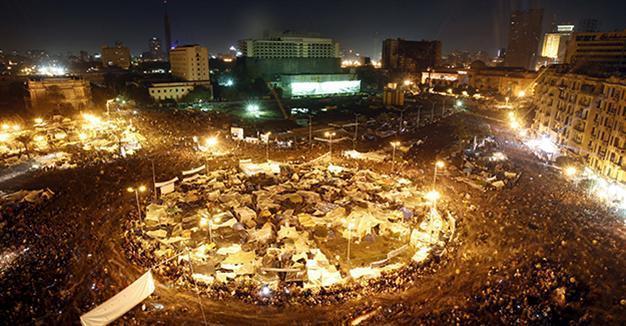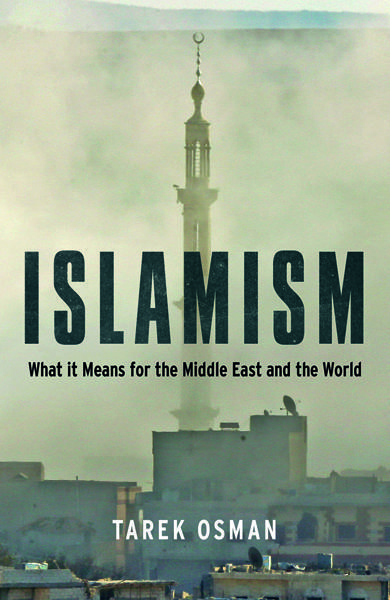Whither Islamism?
William Armstrong - william.armstrong@hdn.com.tr

Five years ago thousands of protesters took to the streets demanding the end of the 30-year reign of President Mubarak as Egypt became the second country to join the Arab Spring. After weeks of clashes, strikes and protests across Egypt, Mubarak resigned on Feb. 11, 2011. REUTERS/Amr Abdallah Dalsh
‘Islamism: What it Means for the Middle East and the World’ by Tarek Osman (Yale University Press, $35, 328 pages)The title of this new book by Tarek Osman might seem a couple of years out of date, such is the speed of change in the Middle East. After the Arab uprisings of 2011, Islamism appeared to be the main beneficiary of political earthquakes in the region and countless books were rushed out to capture the zeitgeist. The new consensus is that the “Arab Spring” has become an “Arab Winter”: Ancien regimes have fought back to reestablish hegemony or states have splintered in the region-wide sectarian meltdown. A cold war between Sunni and Shia conducted through proxy forces dominates political calculation across the Middle East, making intra-state tugs of war between Islamists and secularists now seem a rather quaint preoccupation.
 Fortunately, Osman’s “Islamism…” is a broader account of the forces at work in the Middle East since the 19th century, situating the emergence of contemporary political Islam within the trajectory of modern political developments in Arab countries, Turkey and Iran. At just 300 pages it feels overstretched at times, but it is still a worthwhile contribution to a crowded market.
Fortunately, Osman’s “Islamism…” is a broader account of the forces at work in the Middle East since the 19th century, situating the emergence of contemporary political Islam within the trajectory of modern political developments in Arab countries, Turkey and Iran. At just 300 pages it feels overstretched at times, but it is still a worthwhile contribution to a crowded market.Much of the book redrafts a political history of the modern Arab world that Osman described in a recent BBC documentary radio series. That (rather schematic) history charted how Islamism has risen in recent decades to fill an ideological gap following the failure of Arab liberalism in the late 19th and early 20th centuries and the failure of Arab nationalism in the mid-20th century. Even at those times, many religious Muslims have believed that “Islam transcends the framework of a religion … it was (and continues to be) a political, economic and social system.”
Islamically-rooted politics have taken various forms across the region, shaped by specific local conditions. But in Osman’s account, one key characteristic is that “The rhetoric adopted by Arab political Islam since the late 1990s establishes its legitimacy not on a mandate from a religious authority, nor on divine texts, nor on archaic deals between tribes and religious establishments, but rather on the consent of the people, secured through elections.” Linked to this is how Islamist groups established themselves through grassroots movements targeting poor and lower-middle classes. The classic case is Egypt’s Muslim Brotherhood, which was almost completely crushed by Nasser in the 1950s and 60s but reemerged to build a solid economic infrastructure offering health, education, transport and even marriage services, blurring the religious with the social, the philanthropic with the commercial. The Brotherhood remained a political party, but it was careful to avoid winning large parliamentary representation and thus arousing the wrath of the state.
The build-up of grassroots support allowed Islamist groups across the region to present themselves as “authentic” and “local,” the “real people” in contrast with out-of-touch, oppressive state elites. Osman writes that there was a “gradual division in society between communities that supported the armed forces (and the state institutions) and those that supported the Islamists.” This was all happening at a time when due to the oil boom middle-class Arabs’ cultural antennae were shifting away from Europe and toward the Gulf, full of highly conservative societies with limited global interaction. There was a general loss of cosmopolitanism within Arab societies from the 1970s onward. Christian and other minority religious figures were prominent in earlier Arab political movements, Arab identity underwent a steady Islamization through the second half of the 20th century.
The Brotherhood established branches across the region and many Islamist groups in Turkey also had connections to it. Indeed there are many similarities between political Islam in Turkey and elsewhere. Grassroots service provision gave Islamist groups in Turkey a platform on which to build and gain support among ordinary folks, particularly migrants from rural areas in need of support networks on the urban periphery.
Turkey is not Osman’s specialist subject but his account of the country’s modern history is generally sound. Still, he almost entirely neglects the 1980 military coup, which disrupts the rigid state-periphery dichotomy that much analysis of political Islam is based on. Turkey’s post-coup military regime promoted a nationalist-religious “Turkish-Islamic synthesis” ideology to unify the country after the divisive 1970s. Religious orders were given broader freedom to operate and religious state schools proliferated. By crushing leftist groups, the state – even if only inadvertently – opened up space for Islamist groups to operate in poor neighborhoods.
So the characteristics of the state – in Turkey and elsewhere – are more complex than often assumed, with many competing internal factions. In Iraq, for example, Saddam Hussein’s Baath regime is often held up as an exemplar of authoritarian secular Arab nationalism. But Saddam increasingly opted to dress his administration in Islamic garb to grant it popular legitimacy from the 1980s. Something similar is happening today in Egypt, where the “secular” Sisi regime is increasingly turning to religion in a bid to bolster its authority. Clearly the “secular state vs. religious masses” paradigm has limitations.
Osman points out that describing the post-2011 unrest as an “Arab Spring” was always problematic. Interpreting the revolts across the Arab world with reference to Prague in 1958 was a misguided attempt to translate them into Western history to make them more legible. This obviously led to simplistic interpretations of highly complex dynamics:
The West failed to see that the Arab uprisings were vastly different from central and eastern Europe’s struggle against communism … that the leading activists who became Europe’s key interlocutors in the region were not the faces of large-scale revolution by a new generation against what had gone before. Gradually, the West began to realize that the cold and hot wars unfolding across the Arab world were rooted in deep social polarizations and opposing identities and visions for the future of these countries.
The Arab uprisings, Osman writes, “lifted the lid to reveal the region’s existing critical differences regarding these issues, which had simply been suppressed for decades.” The current chaos is a long way from the general optimism of 2011, but in many ways it is a continuation of the same process. That process could go be going on for decades yet.










